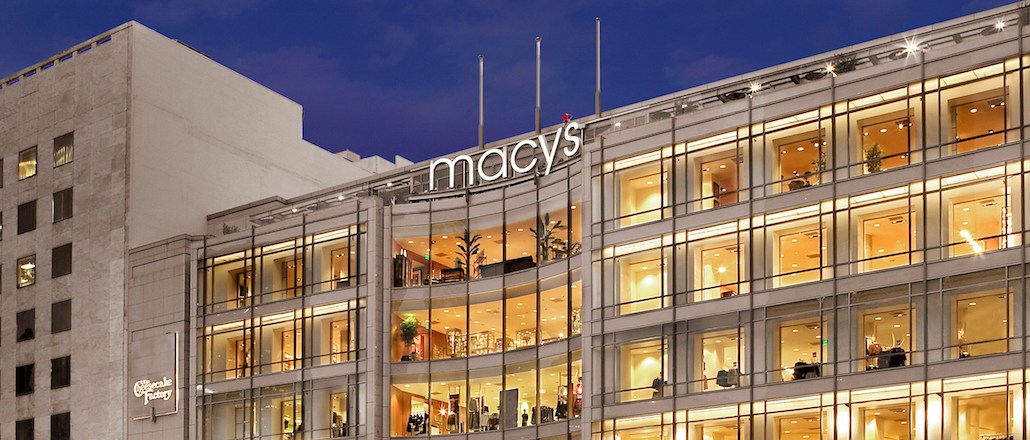
Earlier this month, Macy’s announced its plans to close between 35 and 40 of its lowest performing stores. If the retailer — which has over 800 locations in 45 states — wants to keep sales from continuing to slip –its second quarter comparable sales dropped 2 percent in August — it will have to keep slashing its store count.
In May, CFO Karen Hoguet addressed Wall Street analysts, and pointed to the retailer’s 150 top performing stores as an area ripe for investment, according to Fortune. Those stores are located in cities like New York and San Francisco and at choice shopping malls, where business has boomed, rather than dwindled.
“We believe there is opportunity to elevate these stores further and accelerate their growth,” said Hoguet in May. “Hopefully, we will begin to see the benefit this fall, particularly in the fourth quarter.”
With a less ubiquitous presence all over the country, Macy’s could focus on online sales and Macy’s Backstage, the off-price Macy’s brand akin to stores like Nordstrom Rack and Saks Off Fifth. During its second quarter earnings call, CEO Terry Lundgren pointed to these two channels as opportunities for the chain’s “aggressive growth.”
The company said it plans to improve the in-store experience in those 150 stores by integrating technology, incorporating more high-end offerings, and adding staff. Lower-end clearance items will live in Macy’s Backstage locations.
That model has worked for Nordstrom, which has 120 U.S. locations and focuses on quickly growing the number of its Nordstrom Rack stores, adding 27 this year. In August, the retailer saw comparable sales grow by 5 percent.
Macy’s is feeling the fate of the middle-road retailer: Shoppers on a budget are heading to stores like Target and T.J.Maxx, and those with more to spend are shopping at higher-end specialty stores like Neiman Marcus, Saks and Bloomingdales.
Ad position: web_incontent_pos1
“This year, T.J.Maxx, Nordstrom Rack and Marshalls will open 250 stores combined. That’s a massive amount of apparel retailing that’s not happening in department stores,” said Egelanian. “And then the retailers on the high end are doing quite well, but ones in the middle are not.”
It’s not just Macy’s middle-tier status that’s working against it: The department store format itself is being cannibalized by other consumer options.
“Everything that was once exclusive to a department store was commoditized to become an independent store,” said Nick Egelanian, CEO and president of retail real estate firm SiteWorks. “You’ll see that department stores started to drastically decline in the 1990s.” Egelanian believes that in the next 15 years, department store foot traffic will be cut in half.
To bring in shoppers, Macy’s has introduced a partnership with Best Buy and also acquired Bluemercury, a skincare and beauty retailer with high-end price points. A similar strategy has shown results for JCPenney, which brought Sephora into stores and has since seen a boost in sales because of it.
“It doesn’t hurt to affiliate with strong brands, but is it really going to move the meter? Probably not,” said Egelanian. According to Egelanian, it’s all about convenience — since consumers have so many shopping options, it’s not all that likely they’ll head to a shopping mall to seek out a Macy’s for its Best Buy.
Ad position: web_incontent_pos2
According to eMarketer analyst Yory Wurmser, a remaining benefit of Macy’s many locations is their ability to act as shipping fulfillment centers for online orders, giving the retailer a physical edge over e-commerce competitor Amazon. “Department stores like Macy’s have the physical attributes to compete with Amazon on delivery and fulfillment, but do they have the strategy,” he said.
Egelanian thinks Macy’s should puts its efforts toward competing in the department store space, where it could succeed.
“Macy’s has the talent, the expertise and the relationships to be successful in a higher-end direction,” said Egelanian. “But whether or not they have the focus to do that is another question.”
Image via Macy’s.
More in Marketing

In the marketing world, anime is following in the footsteps of gaming
As marketers look to take advantage of anime’s entry into the zeitgeist, they might be wise to observe the parallels between the evolution of anime as a marketing channel and the ways brands have learned to better leverage gaming in recent years.

With the introduction of video ads and e-commerce, Roblox looks to attain platform status
Roblox is expanding into more areas than just ads in 2024. Much like platforms such as Amazon and Facebook have transcended their origins to evolve from their origins as online marketplaces and social media channels, Roblox is in the midst of a transformation into a platform for all elements of users’ virtual lives.

PepsiCo wants to remain a ‘driver of culture’ as it turns to influencers and activations amid rebrand
The soda-maker says it can translate cultural relevance into sales volume.
Ad position: web_bfu